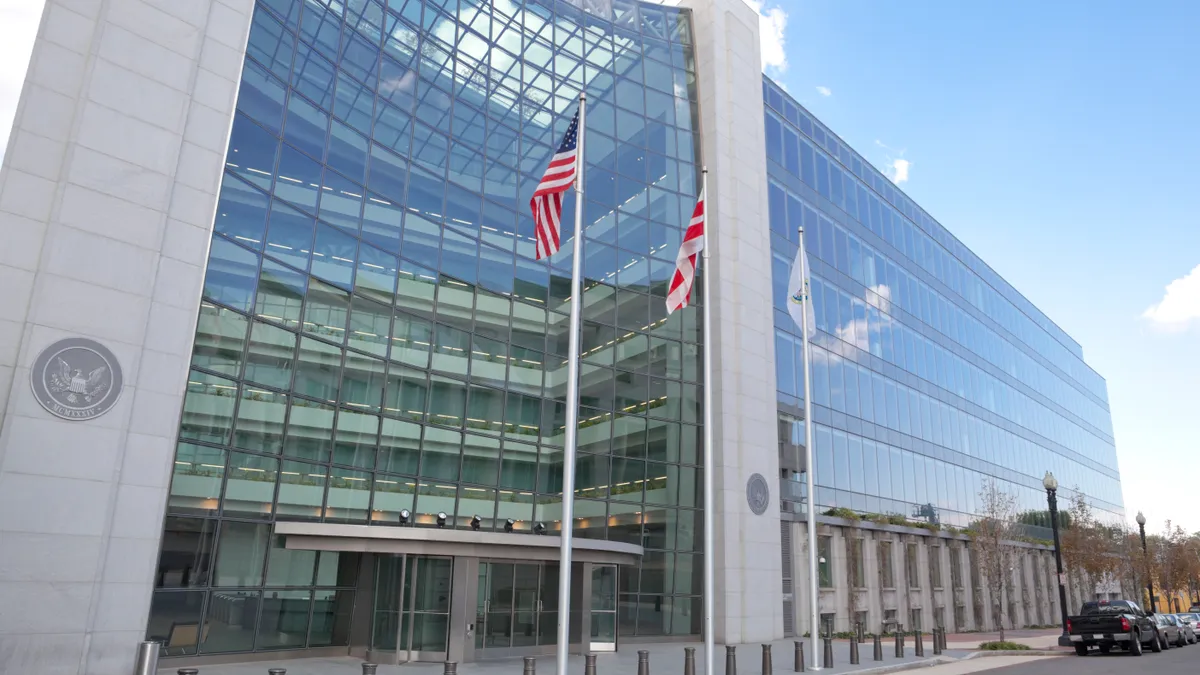Dive Brief:
- The Securities and Exchange Commission charged DXC Technology with making misleading disclosures about non-GAAP financial performance from 2018 until early 2020 and imposed an $8 million penalty on the information technology services company.
- DXC increased its non-GAAP net income by misclassifying tens of millions of dollars in expenses as non-GAAP adjustments for transaction, separation and integration-related costs, the SEC said Tuesday in a press release. The company’s non-GAAP disclosure controls did not ensure that its expense classifications aligned with its public description of TSI costs.
- DXC “has resolved this legacy matter, which related to the presentation of non-GAAP M&A costs principally related to the 2017 merger that formed DXC,” the company said in an email statement. DXC “has proactively clarified its disclosure, reduced these non-GAAP costs and cooperated fully with the SEC.”
Dive Insight:
DXC was created in April 2017 by a merger of Computer Sciences Corp. with most of the enterprise services business of Hewlett Packard Enterprise Co.
After the merger, DXC’s controllership recognized the need for a policy of disclosure controls and procedures for non-GAAP financial reporting and, in fiscal year 2018, circulated non-GAAP policy drafts to staff and the company’s independent auditor, the SEC said in its order.
“However, neither the controllership nor the disclosure committee approved or adopted a policy,” the SEC said. Instead, DXC relied on an informal process in which expenses could be classified as TSI costs even though they were outside the scope of such costs as described in the company’s disclosures.
“Issuers that choose to report non-GAAP financial metrics must accurately describe those metrics in their public disclosures,” Mark Cave, associate director of the SEC’s Enforcement Division, said in a statement. “DXC’s informal procedures and controls were not up to task and, as a result, investors were repeatedly misled about its non-GAAP financial performance.”
Lacking sufficient disclosure controls for the review, approval and classification of TSI costs, DXC misclassified several expenses as TSI costs, including internal labor costs and data center relocation costs that were unrelated to the merger.
“As a result of its negligence, DXC made materially misleading statements about its TSI costs during the relevant period by misstating the nature and scope of those costs,” the SEC said.
The company’s FP&A group was responsible for the initial approval of expenses classified by various business units as potential TSI costs, the agency said. “If FP&A approved a cost as TSI, that expense would be removed from a unit’s financial performance, thereby increasing the unit’s internally-reported profitability.”
DXC’s former assistant corporate controller for external reporting and others in the controllership repeatedly questioned costs characterized as TSI, “but they either did not receive supporting documentation or, at times, were provided with inaccurate or incomplete information,” the SEC said.
For example, DXC hired a consulting firm to calculate historic research and development tax credits so that DXC could claim credits in amended returns going back to 2015, the SEC said.
FP&A told the controllership that the consulting fee was tagged as a TSI cost because the consulting firm was hired to standardize the tax credit methodology for DXC, the agency said.
Yet the work contract for the consulting firm said that its task was to identify incremental tax credits, not recommend a policy or standard, the SEC said.















